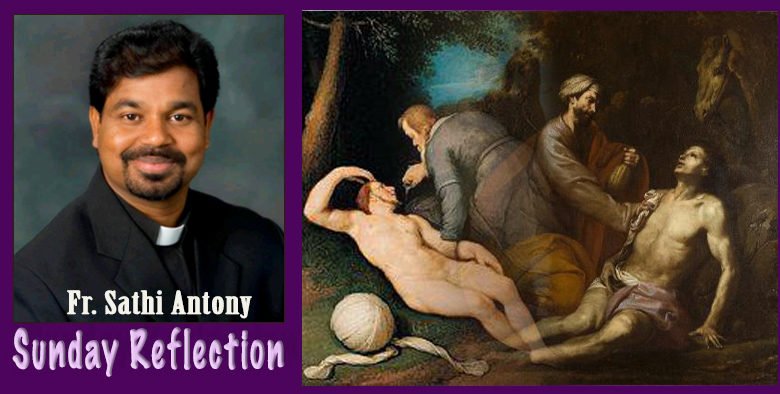The Parable of the Good Samaritan: Forgotten Symbols
It teaches of the plan of salvation, the Savior’s atoning love, and our journey toward inheriting eternal life

One of the most influential stories told by Jesus Christ is the parable of the Good Samaritan. Jesus recounted this parable to a man who had asked, “Master, what shall I do to inherit eternal life?” Jesus responded by asking, “What is written in the law?” The man answered, referring to Deuteronomy:6:5 and Leviticus 19:18, “You shall love the Lord Your God with all your heart … and Your neighbour as yourself.”
When Jesus promised, “Do This, and you shall live,” the man challengingly replied, “And who is my neighbour?” In answer to this man’s questions, Jesus told the parable of the Good Samaritan. (See Luke 10:25–35)
Deeper Levels of Meaning:
The Savior spoke often in parables because each has a deeper meaning understood only by those who have “ears to hear” (Matthew 13:9). Knowing this principle invites reflection on the symbolic message of the Good Samaritan. This parable’s content is clearly practical and dramatic in its obvious meaning, but Christian tradition also saw the parable as an impressive allegory of the Fall and Redemption of mankind. The roots of this allegorical interpretation reach deep into early Christianity. Most of all the Early Church Fathers saw the Good Samaritan as symbolizing Christ Himself saving the fallen victim, wounded with sin. A few years later, this interpretation came down to him from earlier Christians, who had described the allegory as follows: “The man who was going down is Adam. Jerusalem is paradise, and Jericho is the world. The Robbers are hostile powers of the world. The Priest is the Law, the Levite is the prophets, and the Samaritan is Christ.
The Wounds are sins of the world, the Inn which accepts all who wish to enter is the Church, the Inn Keeper is the Disciple. And the fact that the Samaritan promises he will return represent the Savior’s second coming.”
A Type and Shadow of the Plan of Salvation:
The parable of the Good Samaritan testifies of Christ. It teaches of the plan of salvation, the Savior’s atoning love, and our journey toward inheriting eternal life. It can be read as a story not only about a man who went down from Jerusalem to Jericho but also about all who come down from the presence of God to live on earth. Early Christians sensed that Jesus spoke of something important here. St. Origen and St. Augustine saw the loss of the traveller’s garment as a symbol for mankind’s loss of immortality and incorruptibility. The attackers apparently wanted the traveller’s clothing; for no mention is made of any wealth or commodities he might be carrying. For some reason, the robbers seem interested in his garment, something brought down from the holy place and something they envy and want to take away.
Oil: An olive oil lotion would have been very soothing. While most of the early Christian writers saw here a symbol of Christ’s words of consolation, as a “holy anointing” for Healing, the healing of the sick. Wine: The Samaritan also poured wine onto the open wound to cleanse it. Late Christian writers saw this wine as the word of God but the earlier Christian interpretation associated the wine with the blood of Christ, symbolized by the sacrament. This wine, the atoning blood, washes away sin and purifies the soul, allowing God’s Spirit to be with us. In addition to rendering physical help, a truly good Samaritan administers the saving principles and ordinances of the gospel as well. The atoning wine brings healing peace.
Inn: For the early Christians this element readily symbolized the Church. The host: Accordingly, early commentators saw the host, or innkeeper, as Apostles and their successors. If the inn refers to the Church in general, however, the innkeeper and his staff can represent all Church Ministers and workers who are entrusted by the Lord to nurture and care for any rescued soul who seeks healing. When I come again: The Christ-figure openly promises to come again, a ready allusion to the Second Coming of Christ.
Repay or Reward: Finally, the innkeeper is promised that all his costs will be covered: “I will reward you for whatsoever you expend.” Perhaps more than any other element in the story, this promise—in effect giving the innkeeper a blank check. When the story is understood allegorically, this promise makes sense, for the Samaritan (Christ) and his innkeeper already knows and trust each other before this promise is given.
An Eternal Imperative:
Symbols draw our finite minds to sacred truths that are embedded in the mystery of Christ’s incomparable gospel, and an allegorical understanding of the parable of the Good Samaritan adds eternal perspectives to its moral imperatives. In His parables, Jesus taught the essentials of the Father’s plan of salvation. As a type and shadow of this plan, the good Samaritan places our deeds of neighborly kindness here in mortality within the eternal context of where we have come down from, how we have fallen into our present plight, and how the binding ordinances and healing love of the promised Redeemer and the nurture of His Church can rescue us from our present situation, as we serve and live worthy of reward at His Second Coming.
At one level, people can see themselves as the Good Samaritan, acting as physical rescuers and as saviours. Jesus told the Pharisee, “Go, and do thou likewise” (Luke 10:37). By doing as the Samaritan, we join with Him in helping to bring to pass the salvation and eternal life of mankind. Disciples will also want to think of themselves as innkeepers who have been commissioned by Jesus Christ to facilitate the long-term spiritual recovery of injured travellers.
May God make everyone a Good Samaritan A Christ; an Inn Keeper A Disciple. Amen.




